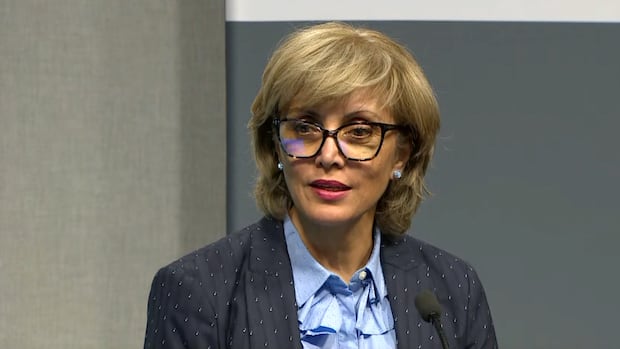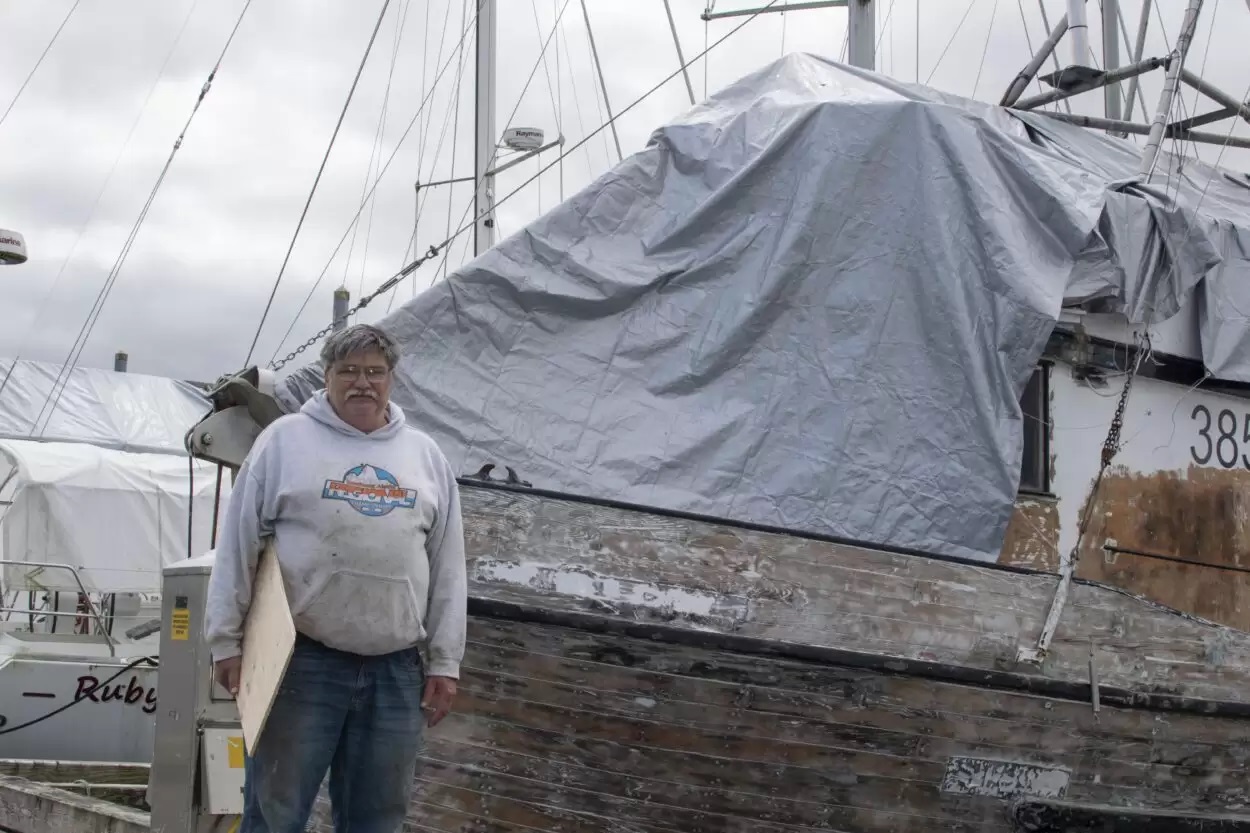
The sprawling wetlands known as the Grand Kankakee Marsh once served as a detoxifying purifier for the South Bend region’s waters, including what residents drank.
People drained it decades ago and turned it into rich and productive farmland, including a flat area just beyond the former swamp where economic forces are looking for a new way to turn a profit. Namely, it’s the $11 billion data center that Amazon Web Services has started building, along with the nearby electric vehicle battery plant that’s in the works by General Motors/Samsung SDI.
And there’s room for more development there, east of New Carlisle in the county’s Indiana Enterprise Center.
The great Kankakee Aquifer sits beneath all that development—the source of drinking water for the people of New Carlisle—and keeping pollution out of it will forever be a pressing issue. A study by local water experts shows that the aquifer lacks a protective layer of clay over it, making it vulnerable if toxins accidentally seep into the ground.

Given the vulnerability, University of Notre Dame professor Alan Hamlet is urging officials to issue an environmental impact statement to protect the Kankakee Aquifer.
Officials say liquid waste from the new industries will not be dumped on land, but instead will be discharged to the South Bend Wastewater Treatment Plant.
It is unclear if any solid material or by-products could fall to the ground.
Water war?Can our aquifer support the huge water needs of the Amazon and EV plant?
When asked, an Amazon spokesman was not specific about the company’s plans here to conserve water or dispose of its waste. The spokesperson referred to an Amazon blog post about how it recycles data center hardware, or e-waste, and “our path to net zero carbon by 2040.”
A GM spokeswoman would not share details when asked about handling the waste. She instead referred to the company’s 2023 sustainability report.
Likewise, a representative of Microsoft Corp. declined comment so far on its plans to build data centers in Granger, where the Juday Creek trout stream runs through the property, and in LaPorte. Both will sit on two separate aquifers.
Microsoft’s move:LaPorte County joins St. Joseph County as locations for Microsoft data centers
True, other New Carlisle-area industries already operated on the Kankakee aquifer. This includes the cold rolled steel plant in Cleveland-Cliffs, which opened many years ago as I/N Tek and I/N Kote, and the more recent plant in Alkegen (formerly Unifrax), which produces technology for lithium-ion batteries.
What assurance does the local community have that its groundwater will remain safe?
This story is paired with another about how heavy water use by new industries would affect the Kankakee Aquifer.
Related story:Can our aquifer support the huge water needs of the Amazon and EV plant?
What about an environmental impact statement?
Before anything can go ahead, Hamlet argues that an environmental impact statement should be carried out to assess how much water the industrial developments would drink, how this would affect the local water supply and any risk of pollution from runoff and surface runoff. .
In particular, the Peerless report says the aquifer is “highly susceptible to pollution” because it lacks a layer of clay to protect it from any toxic seepage.
When asked about such an impact statement, New Carlisle City Engineer Jared Huss referred to the local well protection zone designated for an area — inside and outside the Indiana Enterprise Center — whose boundaries are based on the flow of groundwater below the surface.
The well protection program, created by the feds, is regulated by the state. Huss, who is an engineer with the local firm Lawson-Fisher Associates, said it includes a well protection plan with contacts, communication lines and resources to call for in the event of a spill. It predicts where pollution might come from and how to manage it, along with providing a way to collect data and assess risks.
A plan to protect the wells is good, Hamlet said, but it still warns of the vulnerability of the aquifer.
“If there was a spill that reached the ground surface and seeped through, whether near the wellhead or not, there could be contamination of the aquifer,” he said. “This can happen due to trucks bringing in chemicals (accident), fire or explosion (firefighting creates a spill), mechanical failure of pipes, leaking storage containers, etc.”
But in addition to protecting the wells, Huss said, both GM and AWS agreed to install monitoring wells to measure and control the depth and quality of water in the system. And the city and county are drafting an agreement, yet to be approved, that would limit the total amount of water that local industries and residents can draw from the aquifer.
“We’re going above and beyond what’s required” in the well protection program, he said.
Abinash Agrawal, however, takes Hamlet’s suggestion of an environmental impact statement one step further. As a groundwater remediation expert and professor of earth and environmental sciences at Wright State University in Ohio, he said that, in cases of large industrial water withdrawals, the community must have a comprehensive plan for water and wastewater infrastructure. black.

He said the plan should identify all potential water sources and their capacities, assess wastewater capacity, develop a timeline and budget for infrastructure expansion, encourage and implement water-saving measures by residents. and businesses, assess environmental impacts and create strategies to mitigate potential issues, inform and educate residents and businesses about water and wastewater plans and how they can help with water conservation and planning, and encourage cooperation between government agencies, water utilities and the private sector, sharing resources with the local community.
Such a plan, Agrawal said, ensures there will be enough water “while also protecting the environment and promoting sustainable growth.”
The Pokagon Band of the Potawatomi closely monitors impacts on the broader Kankakee River watershed, where it continues to restore and maintain a wetland.
But Jennifer Kanine, who heads Pokagon’s natural resources program, known as Kowabdanawa ode kė, said they have yet to see any government permits the GM or AWS facility is seeking that would indicate how the waters could be affected. underground and watershed. In particular, they look for large drawdowns in groundwater and how it can be drawn from nearby wells and wetlands.
They recently filed comments on permits for the AquaBounty inland salmon farm in Ohio, east of Pokagon, Ind., which it said had a permit to extract 5.25 million gallons a day. Those permits went ahead anyway.
How will wastewater be treated?
Kyle Doudrick, an environmental engineer at Notre Dame, said he doesn’t expect any country to directly contaminate groundwater with PFAS, or per- and polyfluoroalkyl substances, a group of toxic chemicals that are threatening some of the nation’s drinking water supplies. Toxins, called “forever chemicals” because they are indestructible, can cause cancer, birth defects and other health effects.

But for GM’s battery plant, he had a “mild concern” about whether the data center would generate lithium wastewater and, if so, where it would go. Lithium is unregulated but monitored by the federal Environmental Protection Agency, Doudrick said. whose lab is working on solutions to deal with PFAS chemicals, nitrates and other environmental and public health pollutants.
All wastewater from the GM and Amazon sites will be discharged to the City of South Bend’s wastewater utility. Bill Schalliol, the county’s executive director of economic development, said the bulk of it would have been used for refrigeration or other industrial uses. He believes it will be clean enough that it will require “minimal industrial pretreatment” before going to town.
The wastewater must be free of a long list of chemicals that meet local, state and federal requirements before it reaches South Bend’s treatment plant, said Kimberly Thompson, wastewater director for South Bend.
The city evaluates all commercial and industrial facilities before and after they begin discharging sewage, she said, but it’s still early in the process for both facilities as city staff sorts through preliminary information.
Thompson confirmed that the South Bend plant would monitor for any pollutant expected to be present in an industry, although, at this point, the city does not monitor for lithium because, Doudrick said, it is not regulated.
South Bend Tribune reporter Joseph Dits can be reached at 574-235-6158 or jdits@sbtinfo.com.
#Carlisle #groundwater #aquifer #protected #Amazon #industry
Image Source : www.southbendtribune.com



